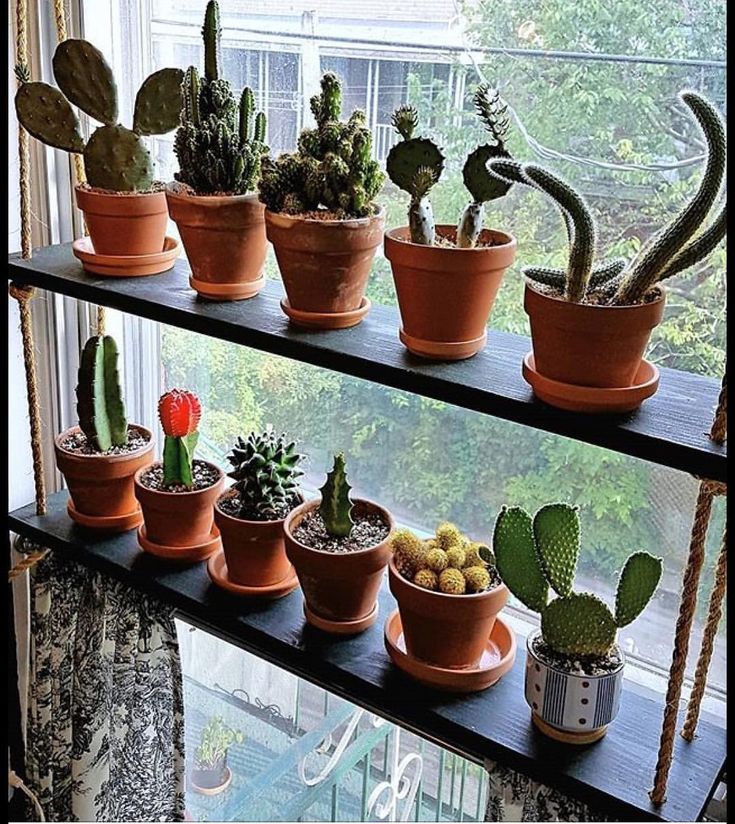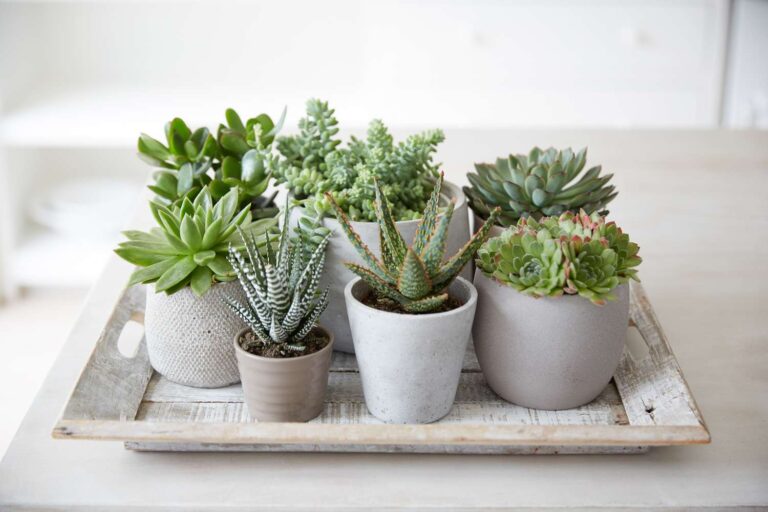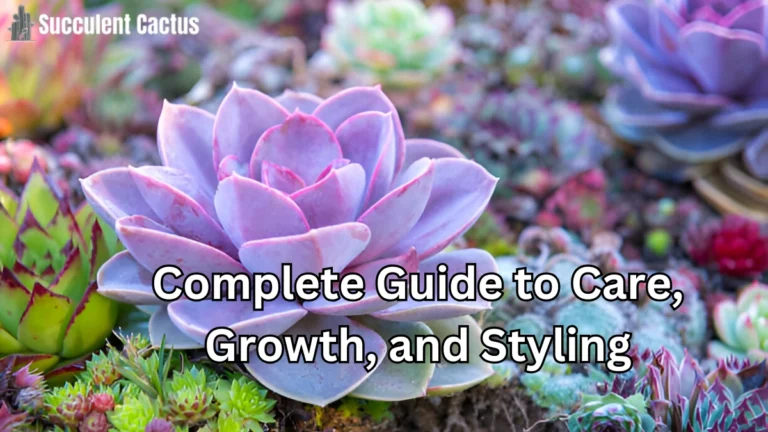How Do You Take Care of a Cactus? Simple Steps for Thriving Cacti

Cacti are fascinating plants that bring a unique touch of beauty to your home or garden. With their spiny exteriors and ability to thrive in dry, arid conditions, cacti are often regarded as hardy and low-maintenance plants. But if you’re new to cactus care, you might be wondering, “How do you take care of a cactus?” Whether you’re a beginner or an experienced gardener, proper care is essential to ensuring that your cactus thrives.
In this article, we will answer the important question: How do you take care of a cactus? We’ll cover everything you need to know, including how to provide the right amount of sunlight, water, and nutrients, as well as how to address common cactus problems. With these simple steps, your cactus will flourish and add beauty to your space for years to come.
What Is a Cactus?
Before we dive into the care tips, let’s quickly define what a cactus is. A cactus is a member of the plant family Cactaceae, and it is known for its thick, fleshy stems designed to store water. Most cacti are native to dry, desert climates, which is why they are so well-suited to surviving in arid conditions. However, despite their rugged appearance, cacti still require some basic care to ensure they thrive.
Cacti come in many varieties, from small, round cacti like the Mammillaria to tall, columnar species like the Saguaro. Regardless of the type, the essential care steps are generally the same. Let’s explore How Do You Take Care of a Cactus so you can give your cactus the best environment possible.
Essential Steps for Cactus Care
1. Providing the Right Light
One of the first things to consider when learning How do you take care of a cactus is sunlight. Cacti thrive in bright, direct sunlight. In fact, most cacti species require between 4-6 hours of direct sunlight each day to grow healthy and strong.
If you’re growing a cactus indoors, place it in a location where it can receive plenty of natural light, such as a south- or west-facing window. If growing outdoors, make sure your cactus is in a spot that receives full sun exposure.
However, some cacti varieties, such as the Rhipsalis species, prefer indirect light and may even do better in partially shaded areas. It’s important to know the specific light requirements for your cactus species.
2. Watering Your Cactus Properly
The next critical question is How do you take care of a cactus when it comes to watering. Overwatering is one of the most common mistakes cactus owners make, leading to root rot and other issues. Cacti are succulents, meaning they store water in their stems and do not need frequent watering.
Here’s a simple rule for watering: allow the soil to dry completely between waterings. Typically, you should water your cactus every 2-3 weeks during the growing season (spring and summer) and reduce watering during the dormant season (fall and winter). Water your cactus deeply, but ensure the pot has proper drainage so that excess water can escape.
To check if your cactus needs water, insert a wooden stick or your finger into the soil. If it feels dry several inches down, it’s time to water. If it still feels moist, wait a few more days before checking again.
3. Choosing the Right Soil for Your Cactus
Another important step in How do you take care of a cactus is selecting the right soil. Cacti prefer well-draining soil that prevents water from pooling around the roots. Use a specialized cactus or succulent potting mix that contains sand or perlite for proper drainage. Avoid using regular potting soil, as it holds moisture and can cause root rot.
If you’re planting your cactus in a garden, ensure the soil is loose and sandy with good drainage. You can amend the soil with sand or grit to improve drainage if necessary.
4. Temperature and Humidity Requirements
Cacti are native to desert environments, so they are best suited for warm, dry conditions. How do you take care of a cactus in terms of temperature? Keep your cactus in an environment where the temperature stays between 70°F to 100°F (21°C to 38°C) during the daytime. At night, the temperature can drop slightly but should not go below 50°F (10°C).
While cacti thrive in dry air, they can still tolerate slight humidity levels. If you’re growing a cactus indoors, make sure the room has proper ventilation to prevent excessive humidity, which could lead to fungal growth.
5. Fertilizing Your Cactus
Though cacti are hardy, they still benefit from occasional feeding. How do you take care of a cactus when it comes to nutrition? Use a diluted, balanced cactus fertilizer during the growing season, usually in the spring and summer months. You can also use a specific cactus fertilizer that’s high in phosphorus to promote blooming and root development. Fertilize once a month during the growing season, but avoid fertilizing in the fall and winter when the cactus is dormant.
Always follow the manufacturer’s instructions for the correct dosage and be cautious not to over-fertilize your cactus, as this can harm the plant.
Common Problems and How to Fix Them
Even with the best care, cacti can experience some problems. Here are a few common issues and how to address them when caring for your cactus:
1. Overwatering and Root Rot
As mentioned earlier, overwatering is the leading cause of cactus problems. If you notice your cactus turning yellow, mushy, or developing brown spots, it may be a sign of overwatering. To fix this, remove the cactus from its pot and examine the roots. If the roots are mushy or dark, trim them with a sterile knife, let the cactus dry for a few days, and replant it in fresh, dry soil.
2. Sunburn
While cacti love sunlight, too much direct exposure, especially after moving them from a lower-light environment, can lead to sunburn. Signs of sunburn include bleached or brown patches on the cactus. If this happens, move your cactus to a location with less direct sunlight and gradually increase its exposure to the sun.
3. Pests
Cacti can sometimes fall victim to pests, including aphids, mealybugs, and spider mites. If you notice tiny bugs or sticky residue on your cactus, it may be infested. Gently wipe the cactus with a cotton swab dipped in rubbing alcohol to remove the pests. For a more severe infestation, use an insecticidal soap or neem oil to treat the plant.
How to Propagate a Cactus
Cacti are easily propagated through stem cuttings or offsets. If you’re wondering How do you take care of a cactus during propagation, here’s what to do:
- Cutting: Use a clean, sharp knife to cut a healthy stem or pad from your cactus. Let the cut surface callus over for a few days to prevent rot.
- Planting: Once the cut surface has dried and healed, plant the cutting in a well-draining soil mix. Keep the soil dry until the cactus begins to root and show signs of new growth.
You can also propagate cacti by removing offsets (baby cacti) that grow around the base of the main plant. Gently separate the offset from the parent cactus and plant it in its own pot with fresh soil.
Conclusion
Caring for a cactus is relatively simple once you understand the basic needs of the plant. By providing the right amount of sunlight, water, and proper soil, and by addressing common issues like overwatering and pests, your cactus will thrive in your home or garden. Remember, How do you take care of a cactus is a question with straightforward answers, but it’s important to consider the specific needs of the species you’re growing.
With these simple steps, your cactus will flourish and provide you with years of beauty and enjoyment. Whether you’re just starting out or are an experienced gardener, taking the time to learn How do you take care of a cactus will reward you with a healthy, thriving plant.






